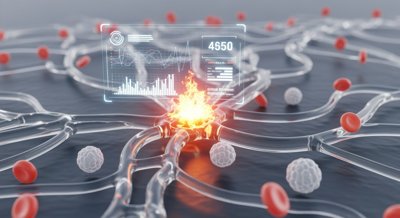✅ The Preconception Blueprint: A Woman's Guide to Preparing for a Healthy Pregnancy

Preparing for pregnancy is one of the most profound acts of preventive medicine a woman can undertake. It’s a conscious decision to build the healthiest possible foundation for a new life, a process that begins long before a positive pregnancy test. This is the essence of preconception health: a proactive partnership with your body and your healthcare provider to optimize your well-being for the marathon of pregnancy and motherhood.
Based on the latest guidelines from the American College of Obstetricians and Gynecologists (ACOG), this is your evidence-based blueprint for that journey. Think of it not as a daunting list of tasks, but as a powerful act of love for yourself and your future child.
Step 1: The Foundational Health Audit (3-6 Months Before Conception)
Before focusing on the specifics of reproduction, we must first assess the overall health of the “house” where a new life will grow. This involves a comprehensive look at your body’s core systems.
- Complete Blood Count (CBC): This is your body’s internal census. It reveals your hemoglobin and hematocrit levels, which are crucial for identifying underlying anemia. Pregnancy places huge demands on your iron stores, and starting with a deficiency can lead to profound fatigue and complications. The CBC also checks your white blood cell and platelet counts, giving a snapshot of your immune function and clotting ability.
- Comprehensive Metabolic Panel (CMP): This panel provides critical data on your organ systems.
- Glucose: Screens for underlying issues with blood sugar control, a key risk factor for gestational diabetes.
- Kidney and Liver Function (Creatinine, BUN, ALT, AST): These organs will be working overtime during pregnancy, filtering waste and metabolizing substances for two. Ensuring they are in top condition is paramount.
- Blood Type and Rh Factor: An essential piece of data. If a mother is Rh-negative and the father is Rh-positive, there is a risk of Rh incompatibility. This is a manageable condition, but only if it’s identified in advance.
Step 2: The Diplomatic Mission: Screening for Infections
Pregnancy naturally modulates the immune system to prevent rejection of the fetus, which makes the body more susceptible to infections. A preconception screening is a diplomatic mission to ensure there are no “uninvited guests” that could cause problems down the line.
The TORCH Panel
This is an acronym for a group of infections that can be particularly dangerous to a developing fetus:
- Toxoplasmosis
- Other (Syphilis, Hepatitis B, etc.)
- Rubella
- Cytomegalovirus (CMV)
- Herpes Simplex Virus
The goal of this panel is to determine your immunity status. For example, if you are not immune to Rubella, a preconception vaccination is strongly recommended, followed by a waiting period before attempting conception. If you are not immune to Toxoplasmosis, you’ll know to take extra precautions, like avoiding raw meat and having someone else clean the cat’s litter box.
Essential Screenings
- HIV, Syphilis, and Hepatitis B & C: These are standard, critical tests for the health of both mother and child.
- Sexually Transmitted Infections (STIs): A full panel, including tests for chlamydia and gonorrhea, is crucial. Many STIs can be asymptomatic but can affect fertility and cause serious complications during pregnancy.
Step 3: The Command Center Check-Up: Hormones and Nutrients
Your endocrine system is the command center for the complex symphony of pregnancy. Ensuring your hormones and nutrient stores are optimized is a non-negotiable step.
The Thyroid: The Master Regulator
According to ACOG, thyroid-stimulating hormone (TSH) is one of the most important tests for a woman planning a pregnancy. Maternal thyroid hormones are critical for the brain development of the fetus, especially in the first trimester. Even a subclinical, asymptomatic hypothyroidism can have a significant impact. For women planning conception, the target TSH level is generally below 2.5 mIU/L.
Strategic Nutrient Stores
- Folic Acid (Vitamin B9): This is the undisputed MVP of preconception care. ACOG recommends starting a daily supplement of at least 400 mcg of folic acid at least one month before attempting to conceive. This simple intervention has been proven to reduce the risk of devastating neural tube defects by up to 70%.
- Ferritin (Iron Stores): While the CBC checks for anemia, the ferritin test measures your body’s iron reserves. Pregnancy dramatically increases iron demands. Entering pregnancy with low ferritin is a setup for severe anemia.
- Vitamin D: This prohormone is essential for immune function, calcium absorption, and countless other processes. A simple blood test (25-hydroxyvitamin D) can identify a deficiency, which is common and easily corrected.
Step 4: The Genetic Briefing (Optional but Recommended)
For many couples, carrier screening is a valuable step. This is a blood or saliva test that can determine if you or your partner are silent carriers for a range of genetic conditions, such as cystic fibrosis, spinal muscular atrophy, and sickle cell disease. This information allows you to understand your reproductive risks and make informed decisions.
A Journey of Empowerment
This blueprint may seem extensive, but it is not an exam to be passed. It is a journey of empowerment, an opportunity to become the most informed and proactive advocate for your own health and the health of your future family.
The ultimate goal is to use this information to have a rich, collaborative conversation with your healthcare provider. Together, you can interpret your unique health data, create a personalized plan, and embark on the incredible journey to motherhood with confidence and peace of mind. And remember, this journey is a partnership; a man’s guide to preconception health is an equally important part of the story.




